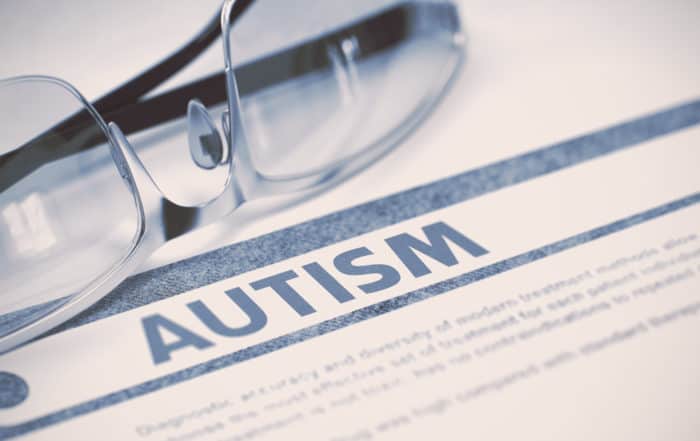When you first noticed your loved one behaving in an unexpected way, you may have decided to wait and see. You may have thought, “Children go through phases. They’ll grow out of it.” But the behaviors persisted. Today you may find yourself wondering: “is it autism?”
You may be worried, confused, or hopeful that you’ll find a diagnosis for your child’s symptoms. Whatever you’re feeling, something brought you to this page. The best thing you can do is find the answer to your question. If it is autism, appropriate support can make a huge difference in your child’s life.
What Is Autism?
Autism Spectrum Disorder (ASD) is a developmental disorder with symptoms that appear within the first three years of life. Most children with autism look like other kids but they act and interact in ways that feel different from the behaviors of other children. When interacting with others, they may respond in unexpected ways, or they may not interact at all.
Autism is a spectrum disorder, which means that it appears in a range of forms and levels of severity. Some individuals develop typical capabilities in terms of speech and language – and develop exceptional skills – but struggle with lifelong social and behavioral differences. Others may have challenges in communication, sensory sensitivities, and behavioral issues, such as excessive tantrums, repetitive behaviors, aggression, and self-harm. The good news is that appropriate treatments can improve outcomes for many, if not most, people diagnosed with ASD.
How Common Is It?
What are the Signs of Autism?
- Delayed speech or difficulty communicating
- Poor eye contact
- Little or no imaginative play
- No joint attention – not looking in the same direction as others
- Showing limited interest in other people
- Highly emotional responses to changes in routine
Where Can I Get Autism Screening?
Common autism screening tools include:
- ARI’s Diagnostic Checklist, Form E-2 – Dr. Bernard Rimland, developed this tool to diagnose children with a subtype of autism called Kanner’s syndrome or ‘classical autism’. You can print and complete the checklist and then mail it to ARI for scoring. Our staff will then analyze the responses and send you a score along with an interpretation at no charge.
- The Ages and Stages Questionnaire – used by healthcare professionals and early childhood educators to assess development progress in children between one month and 5.5 years of age.
- The Modified Checklist for Autism in Toddlers a simple validated screening tool developed in the UK and widely used at 18-month check-ups.
What should I do next?
When preparing to talk to your medical provider, you may want to first fill out the Autism Treatment Evaluation Checklist (ATEC). The ATEC is one of the most widely used assessment tools in the autism community. Although it is not a diagnostic test for autism, this checklist is designed to monitor how an individual progresses over time and to track the efficacy of treatment. Completing the ATEC can give you a good understanding of your child’s current symptoms to discuss with your medical provider.
Learn more about:
- Advice for Parents – For parents of newly diagnosed individuals and parents of young children who want to learn more about the underlying issues associated with ASDs
- Dealing with Parental Stress – Caring for a loved one diagnosed with ASD may require extra support. Find helpful webinars with guidance for navigating challenges parents confront
- Minimizing Risk – While the specific causes of ASD are not well understood, research increasingly points to a combination of environmental and genetic factors. Learn about emerging research and steps to take for a healthy pregnancy.
- Prognosis for People with Autism – Learn more about the long-term outlook for individuals diagnosed with ASDs
- What To Do After An Autism Diagnosis– letter from our executive director, Stephen M. Edelson, Ph.D., addressed to families that have just received an autism diagnosis.
How Age – and Age of Diagnosis – Affect Quality of Life
Dr. Gray Atherton discusses the critical role of age and age of diagnosis in shaping the quality of life for autistic individuals. She provides a brief history of autism understanding and considers
Understanding and Treating Autism: Book Series
A new book, titled Understanding and Treating Sleep Disturbances in Autism, is now available from Jessica Kingsley Publishers. The book is edited by ARI's executive director, Stephen M. Edelson, and past ARI
Understanding and Treating Self-Injurious Behavior in Autism
Pictured: Editors Stephen M. Edelson and Jane Botsford Johnson A comprehensive, authoritative resource on understanding and resolving self-injurious behavior (SIB) in people with autism and related conditions with contributions by top
Understanding and Treating Anxiety in Autism
Pictured: Editors Stephen M. Edelson and Jane Botsford Johnson Understanding and Treating Anxiety in Autism, is now available from Jessica Kingsley Publishers. The book is edited by ARI's executive director, Stephen M.
Data-based Decision Making for Parents of Children with Autism
Physicians, psychologists, therapists, and researchers all keep records. Records help them to track the efficacy of treatments, see how their patients progress over time and adjust their methods and tactics accordingly. As
Autism: Multidisciplinary Evaluation and Treatment – The LADDERS Model
Autism Spectrum Disorder (ASD) is a neurodevelopmental disorder characterized by impaired social interaction, delayed and disordered communication skills and isolated areas of interest. There is a growing appreciation that







